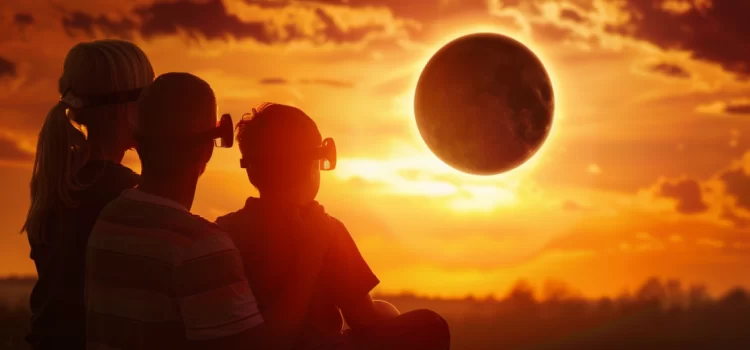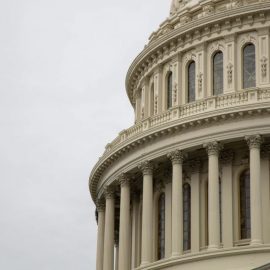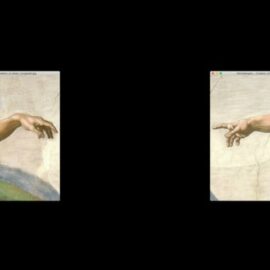
This is a free excerpt from one of Shortform’s Articles. We give you all the important information you need to know about current events and more.
Don't miss out on the whole story. Sign up for a free trial here .
When is the upcoming solar eclipse? What is a total solar eclipse? How can you safely view the eclipse without causing damage to your eyes?
When a total solar eclipse occurs, our planet, our moon, and the sun align to enable the tiny moon to block out the giant sun. While partial solar eclipses aren’t super rare, total solar eclipses are much less common.
Here’s what you need to know about the upcoming solar eclipse.
When Is the Next Total Solar Eclipse?
On Monday, April 8, 2024, millions of people in North America and Central America will find themselves in the path of a total solar eclipse, watching the moon darken the sun for 3 or 4 minutes in the middle of the day. You’ve likely heard that you don’t want to miss out on this unusual event. Scientists have been planning for it for years, and people are traveling across the country to attend eclipse festivals and parties. But why is the upcoming solar eclipse so exciting?
What Is a Total Solar Eclipse?
A solar eclipse occurs when the moon passes between the Earth and the sun, and the shadow of the moon falls on the Earth. Solar eclipses occur frequently (about every 18 months). But a total solar eclipse is much less common because the sun, moon, and Earth have to align precisely. Here’s what has to happen:
The Position of the Moon Has to Be Exactly Right
A solar eclipse can only happen during a New Moon, when the moon and the sun align on the same side of the Earth and the moon’s shadowed side points toward us.
For the moon to look large enough in the sky to block out the sun, another cosmic coincidence has to occur. Though the sun is 400 times bigger than the moon, it’s also approximately 400 times farther from the Earth. The moon’s orbit around the Earth is elliptical, rather than perfectly round. So its distance from the Earth varies throughout its orbit—and with it, the moon’s apparent size in our sky. This means that for the sun and the moon to look almost exactly the same size from Earth, the moon has to be positioned at exactly the right distance from Earth.
Your Position on Earth Has to Be Exactly Right, Too
If you want to stand in the shadow of the moon and see a total solar eclipse, you have to be in the right place. That’s because the shadow cast by the moon is much smaller than the surface of the Earth, about 300 miles wide. The track that the darkest part of the moon’s shadow, or “umbra,” will trace across the Earth is called the eclipse’s “path of totality.” People inside this 115-mile wide band will see the face of the sun completely obscured. They might also see the sun’s outer atmosphere, or “corona,” which is usually not visible because of the brightness of the face of the sun.
Even if you live outside of the path of totality, you’ll likely still be able to see a partial solar eclipse because of the moon’s “penumbra,” its fuzzier outer shadow. Though the sun won’t go completely dark, you’ll still see the light change, observe the sun being partially blocked by the moon, and see shadows forming crescent shapes.
A total solar eclipse is a rare occurrence at any given location because an eclipse is only visible from about 1% of the Earth’s surface. The next total solar eclipse that will be visible from the contiguous US won’t happen until 2045.
What Will You See on the Day of the Eclipse?
A total solar eclipse offers scientists the chance to study some odd phenomena on the surface of the Earth, too. Animals, birds, and insects often react to the sudden darkness by pausing their activity, behaving in odd ways, or suddenly going silent. Even plants react to an eclipse and seem to respond as if it’s dusk, slowing photosynthesis and transpiration and closing their leaves or flowers. Some plants may be stressed or shocked when sunlight reappears.
To observe the eclipse, you’ll need a pair of “eclipse glasses.” It’s not safe to look directly at the sun without eye protection during a partial solar eclipse, which happens before and after a total solar eclipse and outside the path of totality. (If you’re in the path of totality, you can look at the eclipse directly only during the few minutes when the moon fully covers the sun.) It’s dangerous to look at the sun through a camera, binoculars, or a telescope without a solar filter. If you can’t track down eye protection in time, you can build a pinhole projector or tune in to a livestream.

Want to fast-track your learning? With Shortform, you’ll gain insights you won't find anywhere else .
Here's what you’ll get when you sign up for Shortform :
- Complicated ideas explained in simple and concise ways
- Smart analysis that connects what you’re reading to other key concepts
- Writing with zero fluff because we know how important your time is






